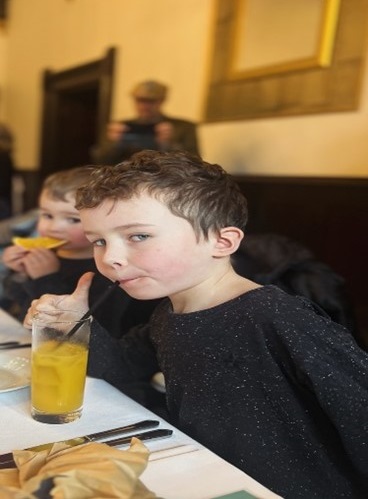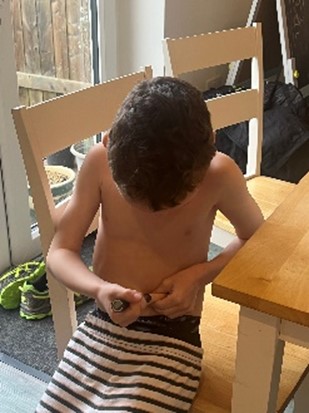We were relieved to have caught Jack’s Type 1 diagnosis when we did and prevented a hospital admission for him. We need a Registry to help understand better about how T1D progresses and to recruit individuals into trials to get a cure for T1D!

How it all started
Jack was 5 years old, he started primary school in September 2021. In November 2021 we noticed that he appeared extremely tired and was having a few wee accidents at night and in the day after being dry for 1 year +. We thought, “he's just started school so he's likely just tired from all the playing and learning”.
I am aware of the symptoms of T1D and I have type 1 diabetes myself (I was diagnosed aged 8), my Dad also had T1D (diagnosed aged 2) so I wanted to get Jack checked.
I took him to the GP at the end of November 2021 and they did a HbA1c which came back normal. I felt relieved – maybe I was worrying for nothing??
Fast forward 8 or so months later, Jack had started complaining of tummy ache on and off and was still very tired and lethargic. He was seen by an out of hours GP, constipation was ruled out and a urine sample for UTI came back normal.
I managed to convince Jack to let me check his glucose on my capillary blood glucose meter that evening before his evening meal and it was 10.2 mmol/L. We washed his hands again and re-checked – 10.6 mmol/L (not normal!). The next day with a Libre sensor his glucose 2 hrs after lunch was 13.2 mmol/L.
He was seen at our local hospital that evening, stayed overnight for monitoring and had further bloods done. His HbA1c was still unchanged at 35 mmol/mol, but a month later the autoantibody results came back strongly positive (GAD, IA2 and ZnT8).
Monitoring blood glucose levels
I didn't want to test Jack’s blood glucose too often as I didn’t want him to resent having diabetes, but when I did check, his glucose would often rise to 12–15 mmol/L within 2 hours of eating before returning to normal.
We were referred to the Oxford Pre-T1D clinic where Jack had 6 monthly HbA1c, 3 monthly post-prandial home glucose testing, and fingerprick checks during illness. His autoantibody tests remained strongly positive. It was reassuring to have regular review and a clear plan in place.
In March 2024, Jack became unwell with fever and a rash. We checked his glucose and it was very high. Following the team’s advice, he was started on low-dose insulin.

What it meant to us
We were relieved to have caught Jack’s Type 1 diagnosis when we did and prevented a hospital admission. His diagnosis almost felt like a ticking time bomb – not a matter of if, but when. Of course, we didn’t want Jack to get Type 1 Diabetes, but we didn’t want him to end up very poorly in DKA either.
Knowledge is power – but knowing your child has positive antibodies without knowing when the diagnosis will come is tough. Having a plan and support made a huge difference.
Since starting insulin, family, friends and school staff have commented on how much more energy Jack has. He is our little superstar and has been so brave and resilient ⭐️.
Why we think the registry is important
- Early identification of at-risk individuals enables proactive monitoring and interventions to delay or prevent onset.
- Researchers can track how antibody-positive individuals progress, informing better strategies and therapies.
- Supports recruitment into clinical trials for treatments aimed at delaying or preventing Type 1 Diabetes.
- Enables more personalized approaches, identifying patterns that predict who is more likely to develop T1D.
- Provides valuable public health data, guiding education and early intervention policies.
- Supports families through genetic counselling and tailored advice.